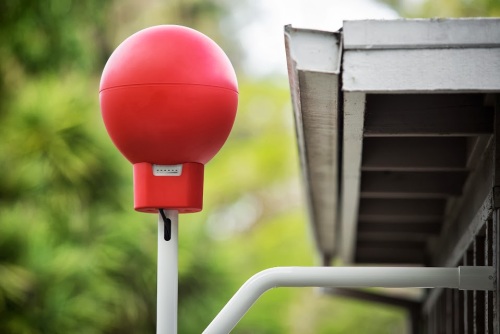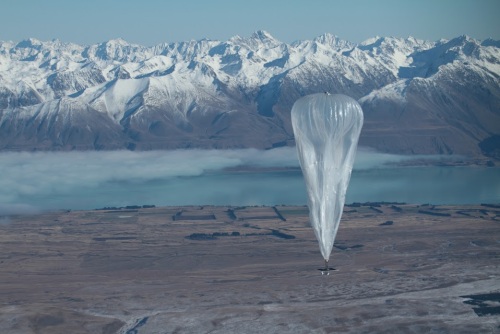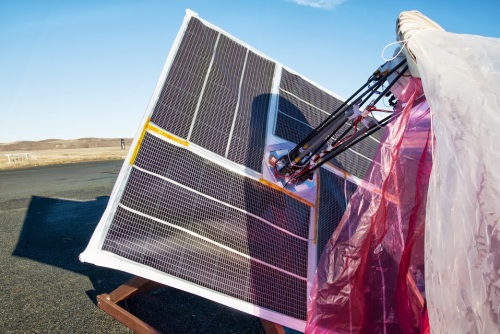Google has started a new program called “Project Loon” which involves the launching of superpressure balloons into near space for the purpose of providing internet access to towns and villages below.

A Project Loon balloon takes to the skies.
The project is still experimental — only 30 of these balloons are being sent off from New Zealand’s South Island right now. They will drift around on a controlled path and the equipment attached to them will provide 3G-like Internet connectivity to 50 testers throughout the country.

A custom-designed Internet antenna attached to a user's house allows the homeowner to receive Internet service from Project Loon.
While access is expected to be spotty at first, the company hopes to eventually build up enough of a fleet that they can offer reliable coverage in remote spots throughout the world as well as disaster-hit areas as a means for aiding rescue efforts where communication equipment might be temporarily down or otherwise completely destroyed.

Project Loon balloon during ascent.
Each balloon is just short of 50 feet in diameter and filled with lifting gases. Radio antennas, a flight computer, altitude control system, and solar power system are all attached to it.

The electronic equipment on the Project Loon balloons gets its power from solar panels.
Google is looking to fly the balloons at an altitude of 12 miles or more — well above controlled airspace. The company figures the balloons to stay aloft for 100 days or so, travelling west-to-east, all the while providing Internet connectivity to an area approximately 25 miles in diameter below.
In terms of control, Google’s computer servers will run calculations to determine how best to keep the balloons on track. The software will make adjustments to the balloon’s altitude as necessary based on various elements, including things like wind conditions.
When it comes to power, the solar panels attached to the balloons are able to produce 100 Watts. Algorithms will be used to ensure that enough charge is always left in the batteries to allow them to continue working as they travel through the night.

A Project Loon balloon travels at dusk.
When the balloon approaches the end of its working life, the software initiates a controlled descent back to Earth so that the kit can be recovered by teams of local employees.
Everything, from control to power to landing, though it’s all being run by computers, will constantly be monitored by a small team of engineers.
For a more in-depth understanding, check out this behind-the-scenes story on Project Loon:
To learn more, go to google.com/loon
Advertisement
Learn more about Electronic Products Magazine





